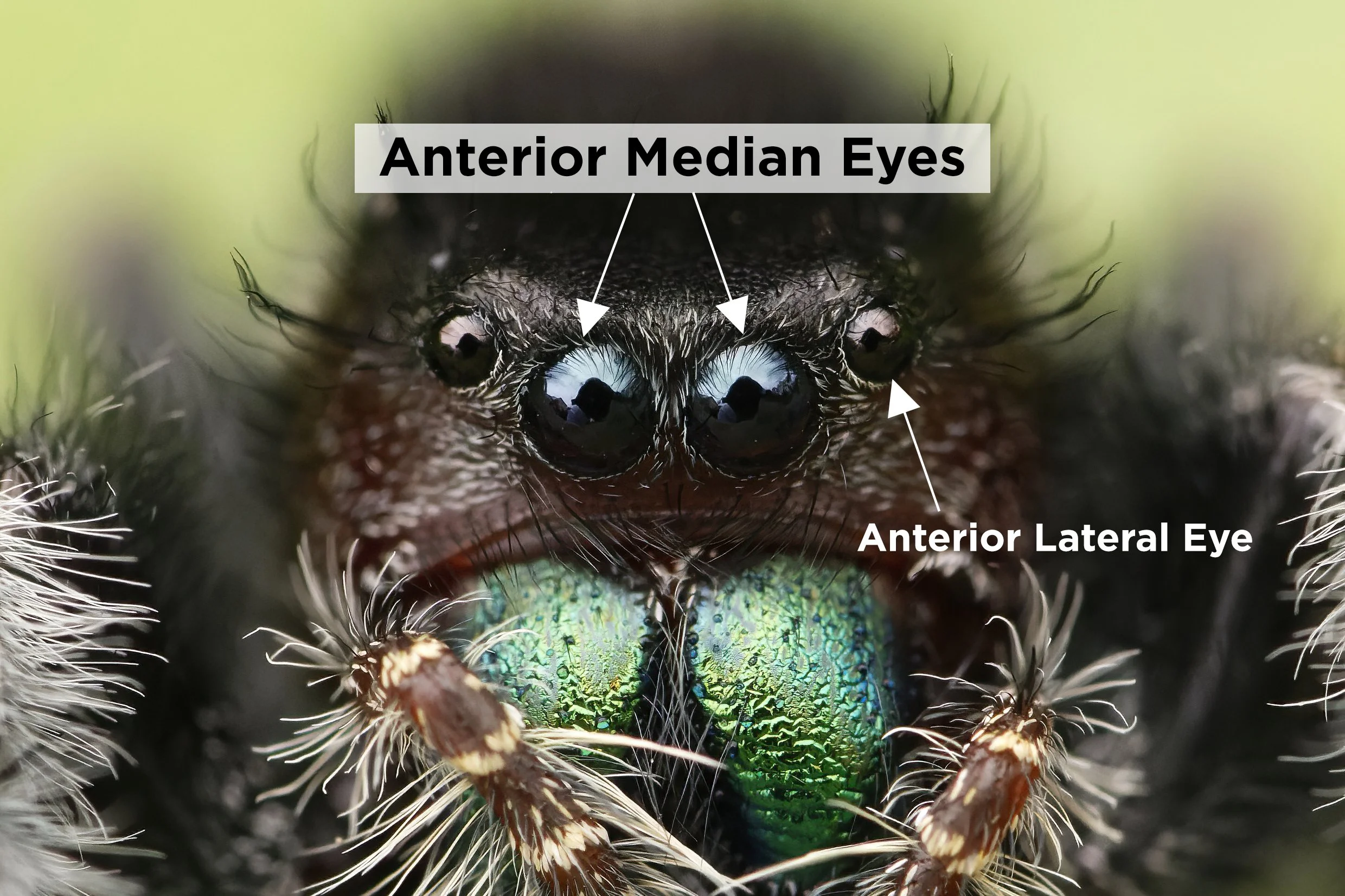LEAPING INTO THE WORLD OF JUMPING SPIDERS
Meet the jumping spider, a tiny yet agile predator at our reserve. These intelligent hunters may not be everyone's cup of tea, but they're undeniably fascinating. Leap into the world of jumping spiders and discover their impressive abilities in our latest blog below. You might just find yourself charmed by these multi-eyed arachnids!
Hyllus sp. of jumping spider photographed on our Greater Ukuwela Nature Reserve.
Jumping spiders, belonging to the family Salticidae, are among the most captivating arachnids, known for their exceptional vision, agile hunting techniques, and often vibrant appearances. Globally, Salticidae is the largest spider family, encompassing about 6,000 described species across more than 600 genera.
DIVERSITY IN SOUTH AFRICA
South Africa boasts a rich diversity of jumping spiders. Recent data indicates that 76 genera and 356 species have been described within the country, with numbers steadily increasing as new species are discovered and classified.
Notably, the Ndumo Game Reserve in KwaZulu-Natal is a hotspot for salticid (jumping spider) diversity. A comprehensive survey at Ndumo in 2009 identified 72 species across 38 genera, including the introduction of a new genus, Aenigma, and 14 species new to science. The Ndumo Game Reserve (NGR) is situated in the northern part of the KwaZuluNatal Province, South Africa, and is a short drive from our Greater Ukuwela Nature Reserve.
EXCEPTIONAL VISION AND HUNTING SKILLS
Jumping spiders are diurnal predators (hunting during the day), relying heavily on their keen eyesight. Their large anterior median eyes provide acute vision, allowing them to discern fine details, essential for hunting and mate selection. The smaller lateral eyes detect motion, aiding in navigation and prey detection.
Unlike web-building spiders, salticids are active hunters. They employ a combination of stalking, chasing, and leaping to capture prey (thus their name!), showcasing remarkable agility and precision.
UNIQUE ADAPTATIONS AND BEHAVIORS
Jumping spiders aren’t just skilled hunters—they’re also masters of deception. Many salticids have evolved to mimic other insects, often as a form of protection from predators.
Species in the genus Myrmarachne are perhaps the best-known ant mimics, closely resembling ants in both appearance and movement. Similarly, spiders in the genus Kima also mimic ants and are recognised by their distinctly antlike bodies.
Taking mimicry even further, species in the genus Mexcala imitate mutillid wasps, also known as velvet ants. These spiders are strikingly similar to their wasp models, especially in body proportions and in their bright, contrasting abdominal patterns. This kind of mimicry is believed to offer protection from predators, as velvet ants are known to be unpalatable and aggressive.
Interestingly, most of the best ant-mimicking salticids do not prey on ants. Instead, they seem to benefit by living in close proximity to them—using mimicry primarily as a defensive strategy rather than a tool for predation.
Beyond mimicry, jumping spiders are also famous for their intricate courtship behaviors. Males of many species engage in elaborate dances, using their brightly colored limbs and body parts to attract females. These visual displays are often accompanied by vibrations or tapping, adding another layer of complexity to their communication.
Side view of the Hyllus sp. of jumping spider photographed on our Greater Ukuwela Nature Reserve.
CONSERVATION AND RESEARCH IMPORTANCE
The diversity and ecological significance of jumping spiders make them valuable indicators of environmental health. Their presence and abundance can reflect habitat quality and biodiversity. Ongoing research and surveys continue to uncover new species, emphasizing the importance of conservation efforts to protect these remarkable arachnids and their habitats.
But as with many creatures, the greatest threat they face is habitat loss. Protecting the natural landscapes these spiders call home is vital—not only for their survival but for the health of entire ecosystems. By conserving wild spaces, we safeguard the delicate web of life they help sustain.
At Wild Tomorrow’s Greater Ukuwela Nature Reserve, we have not yet surveyed our jumping spider diversity, but judging by nearby Ndumo Reserves’s amazing Salticidae diversity,there is lots to explore! We are excited to welcome scientists and researchers in the near future to help us explore and catalog the biodiversity at our reserve, collaborating with our team at the Wild Tomorrow Conservation Center. Perhaps new jumping spider species await their own leap of discovery at Ukuwela.
CONCLUSION
South Africa's jumping spiders are a striking example of the country’s rich and still-unfolding biodiversity. Their remarkable vision, agile hunting skills, intelligence and ingenious mimicry make them one of the most fascinating spider families on the planet. Ongoing research continues to reveal new species and behaviours, highlighting just how much there is still to discover.
Whether you're an arachnologist or a curious nature enthusiast, jumping spiders offer a window into the wonders of evolution and adaptation. And through habitat protection, we can ensure they continue to leap through the grasses and forests of South Africa for generations to come.
REFERENCES
Wanda Wesolowska1 and Charles R. Haddad2* Jumping spiders (Araneae: Salticidae) of the Ndumo Game Reserve, Maputaland, South Africa - AFRICAN INVERTEBRATES, VOL. 50 (1), 2009



